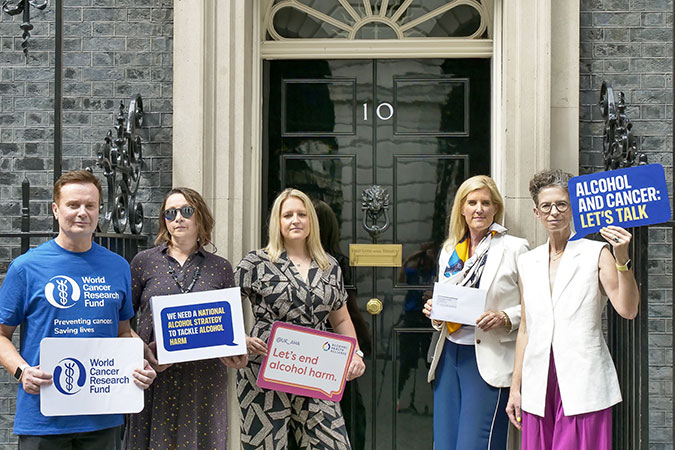Diva Fanian shares her perspectives on the threats and opportunities around regulating junk food marketing online.
From billboards in the sky to the iPad on your lap
Unhealthy food and non-alcoholic drink advertisements are everywhere. With advancements in digital technologies, advertisements are more available, accessible, personalised and – if I may – insidious than ever before.
Your favourite influencer may be posting a photo of a sweet treat they can’t stop getting from the grocery store. Or a pop-up of a new flavoured drink appears on the side of your internet page for a product you were not even searching for, but prompted by a text from your friend about it an hour ago.
With the holiday season upon us, many of us look forward to the annual tradition of seasonal advertisements. Some of the biggest food and drink brands are famous for their Christmas adverts and might hold a soft spot in our hearts.
However, while the presentation may be palatable, the product which is being promoted is often not – which is even more worrying as they reach new and wider audiences thanks to platforms like YouTube, Facebook and Twitter.
What’s the issue with digital food advertising?
Adverts play a huge role in the food choices we make, with most food and non-alcoholic advertising being for products that are considered unhealthy – namely, they are high in fats, salts and sugars (HFSS).
Marketing has a big impact on the diets of children – research shows that the marketing and advertising of HFSS foods impacts children’s food preferences, purchase requests and eating patterns. Subsequently, marketing of unhealthy food is found to be linked to the global rise in childhood obesity.
Promoting and protecting the rights of children is a responsibility beyond that of parents, but one for governments to regulate.
However, resistance from the food and drink industry is significant, spending huge amounts of money fighting regulation as they know just how effective marketing is.
The ‘web’ of digital marketing
Digital marketing presents a whole new set of technical challenges for governments in the design of regulations. When I was younger, if the government wanted to regulate the promotions I was exposed to, their best bet would be to go to the source of it all – before- and after-school TV programmes. Today, children and adolescents are less likely to be glued to the TV, but rather glued to their digital devices.
The tricky part is, children often have access to webpages that are designed for adults, and adverts will appear regardless of their age-appropriateness. For governments trying to reduce children’s exposures to unhealthy food marketing, managing the source of the ad becomes a nearly impossible task!
This makes it very difficult for regulators to understand the extent to which children are being exposed to HFSS advertising online and, therefore, in preventing them from being seen. If that didn’t make it complicated enough, digital platforms are able to collect extensive personal data from users to deliver advertising that is personalised, leaving children even more vulnerable to this targeted practice, and more difficult to regulate.
What are governments doing?
We are starting to see the implementation of policies ready to tackle this public health issue. For example, in Chile, restrictions to unhealthy food marketing were introduced in 2016 for children aged 14 and under across media platforms including digital content.
As mentioned, it’s difficult to know which websites children access, and so governments should apply a precautionary approach and restrict all digital marketing. Commendably, the UK government is consulting on the introduction of a total restriction of digital HFSS food marketing. WCRF submitted a response outlining our support for the ban.
So, what next?
These are just two examples to demonstrate the role of policy in responding to the impact of unhealthy food marketing around the world and in addressing the growing concern of childhood obesity. However, a lot more needs to be done, and we need more countries to take a far more proactive role in regulating digital spaces for children.
As we spend ever more time online, especially due to the Covid-19 pandemic, we risk even more children being exposed to unhealthy foods. We’ll keep playing our part by advocating for restrictions on digital marketing and providing advice on how those regulations can be designed and implemented.
> Find out more about restrictions on HFSS food marketing in our new Report Summary from our Building Momentum series Lessons on implementing robust restrictions of food and non-alcoholic beverage marketing to children.
> A copy of our response to the UK Government’s consultation can be found here



